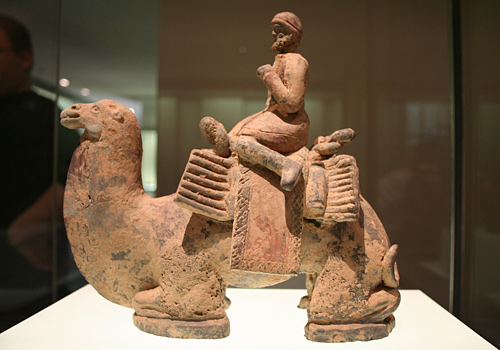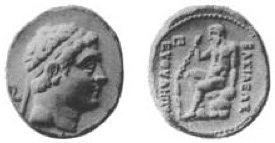"Money makes the world go around," the saying goes. In this lesson you will examine how trade has changed over time and has connected societies globally-literally, making the world go around! This lesson will focus on the ancient trading route called the Silk Road. Click on the link below to watch a video that describes how trade in Ancient Rome had a global impact:
![]() What the Ancients Knew: Roman Trade
What the Ancients Knew: Roman Trade
![]() Wow! The Ancient Romans had a great system of trade. Now let's fast forward to see how trade between countries is handled today in this video of the World Trade Organization:
Wow! The Ancient Romans had a great system of trade. Now let's fast forward to see how trade between countries is handled today in this video of the World Trade Organization:
Source: WTO at Fifteen, WTO, YouTube
Trade provides mankind's most significant meeting place, the market. Trade is the exchange of a commodity (goods traded such as agriculture, metal, textile, people, and animals) for another commodity that is seen to have an equal value. New ideas, along with precious artifacts have always travelled along trade routes. Anything that has been mined, grown, produced, created, or even found on the ground has been or could be traded.
Here are some things to remember about trade as you learn more about the Silk Road:

Source: Westerner on a camel-Cenucschi Museum, Guillame Jacquet, Wikipedia
Trade between distant places involves entrepreneurs (people willing to risk their property to start a business) and middlemen, people willing to accept delay and risk in the hope of a large profit. When travel is slow and dangerous, the trader's commodities must be as imperishable (won't rot or die) as possible; and they must be valuable in relation to their size. Spices, textiles, precious metals (like silver and gold) or useful metals like copper, bronze or iron were all traded over long distances because of their durability.
In ancient times, trade of perishable commodities like fruits and vegetables or livestock were traded locally while more non-perishable goods were traded over longer distances. The longer the distance, the greater the risk for the trader but the trader also received a greater price for his commodity as a result.

Source: EuthydemusI, PHG, Wikipedia
The use of money was developed to help people trade. Currency like the US dollar is designed so that people can trade those dollars for goods and services with little loss in value. Rather than having to carry gold or silver nuggets, (or chicken eggs) if you want to trade for a soda at your local store, you carry cash. You trade your cash for the soda.
Imagine that you were going on a long trip lasting several months, what would be some of the things that you would take on your journey? Write down items you would need to use on your journey and items you could use to trade.